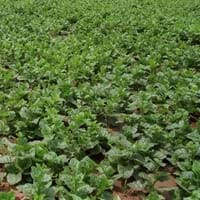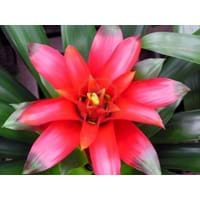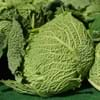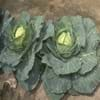Life Span
Perennial
Annual or Biennial
Origin
Southeastern Asia, India
Hybrid origin, South America
Types
Red Malabar Spinach, Green Malabar Spinach
not available
Habitat
Hot climate regions, Humid climates
Homesteads, Screen Cottage and Informal Garden, Woodlands
USDA Hardiness Zone
Not Available
9-11
Sunset Zone
H1, H2, 3a, 3b, 4, 5, 6, 7, 8, 9, 10, 11, 12, 13, 14, 15, 16, 17, 18, 19, 20, 21, 22, 23, 24
H1, H2, 22, 23, 24
Habit
Vining/Climbing
Rosette/Stemless
Flower Color
Red, Green, Orange Red
White, Red
Flower Color Modifier
Bicolor
Bicolor
Fruit Color
White, Ivory
Non Fruiting Plant
Leaf Color in Spring
Green, Light Green
Light Green, Burgundy
Leaf Color in Summer
Green, Dark Green
Light Green, Burgundy
Leaf Color in Fall
Purple, Gray Green
Light Green, Burgundy
Leaf Color in Winter
Purple, Gray Green
Light Green, Burgundy
Leaf Shape
Heart-shaped
Long and slender with very sharp edges
Plant Season
Spring, Summer, Fall, Winter
Spring, Summer, Fall, Winter
Sunlight
Full Sun, Partial Sun, Partial shade
Partial Sun, Partial shade
Type of Soil
Clay, Loam
Sand
The pH of Soil
Neutral
Acidic, Neutral, Alkaline
Soil Drainage
Well drained
Well drained
Bloom Time
Not Available
Early Summer, Summer, Late Summer
Tolerances
Drought
Drought
Where to Plant?
Ground
Pot
How to Plant?
Leaf Cutting, Seedlings
Corms or bulbs, From Rhizomes, Rhizome division
Plant Maintenance
Medium
Medium
Watering Requirements
Do not let dry out between waterings, Requires consistently moist soil
Average Water Needs, Never Over-water
In Summer
Average Water
Lots of watering
In Spring
Moderate
Moderate
In Winter
Average Water
Average Water
Soil pH
Neutral
Neutral, Slightly Acidic
Soil Type
Clay, Loam
Moist but well drained, Sandy
Soil Drainage Capacity
Well drained
Poorly Drained
Sun Exposure
Full Sun, Partial Sun, Partial shade
Indirect sunlight, Partial shade
Pruning
Remove damaged leaves, Remove dead leaves
Remove damaged leaves, Remove dead branches, Remove dead leaves
Fertilizers
Nitrogen
All-Purpose Liquid Fertilizer
Pests and Diseases
Aphids
Pests and diseases free
Plant Tolerance
Drought
Drought
Flower Petal Number
Single
Single
Foliage Texture
Medium
Medium
Foliage Sheen
Glossy
Glossy
Attracts
Not Available
Hummingbirds
Allergy
Not Available
Unknown
Aesthetic Uses
Not Used For Aesthetic Purpose
Showy Purposes
Beauty Benefits
Not Available
Not Available
Environmental Uses
Air purification
Air purification
Medicinal Uses
Folate, Iron, Low calories, Low Fats, Rich in Potassium, ß-carotene, Vitamin A, Vitamin C
Not Available
Part of Plant Used
Leaves
Not Available
Other Uses
Used As Food
Not Available
Used As Indoor Plant
No
Yes
Used As Outdoor Plant
Yes
Yes
Garden Design
Container, Edible, Groundcover, Herb / Vegetable, Tropical, Vine
Houseplant, Informal Garden
Botanical Name
BASELLA alba
Bromeliad
Common Name
Ceylon Spinach, Malabar Spinach, Red Malabar Spinach
Bromeliad
In German
Malabarspinat
Bromeliad
In French
L’épinard de Malabar
Bromeliad
In Spanish
espinaca de Malabar
Bromeliad
In Greek
Malabar Σπανάκι
Bromeliad
In Portuguese
Malabar espinafre
Bromeliad
In Polish
Szpinak Malabar
Bromeliad
In Latin
Spinach Malabar
Bromeliad
Phylum
Magnoliophyta
Spermatophyta
Class
Eudicotyledones
Liliopsida
Order
Caryophyllales
Bromeliales
Family
Basellaceae
Bromeliaceae
Clade
Angiosperms, Core eudicots, Eudicots
Not Available
Tribe
Not Available
Not Available
Subfamily
Not Available
Not Available
Number of Species
Not Available
Not Available
Importance of Malabar Spinach and Bromeliad
Want to have the most appropriate plant for your garden? You might want to know the importance of Malabar Spinach and Bromeliad. Basically, these two plants vary in many aspects. Compare Malabar Spinach and Bromeliad as they differ in many characteristics such as their life, care, benefits, facts, etc. Every gardener must at least have the slightest clue about the plants he wants to plant in his garden. Compare their benefits, which differ in many ways like facts and uses. The medicinal use of Malabar Spinach is Folate, Iron, Low calories, Low Fats, Rich in Potassium, ß-carotene, Vitamin A and Vitamin C whereas of Bromeliad is Not Available. Malabar Spinach has beauty benefits as follows: Not Available while Bromeliad has beauty benefits as follows: Not Available.
Compare Facts of Malabar Spinach vs Bromeliad
How to choose the best garden plant for your garden depending upon its facts? Here garden plant comparison will help you to solve this query. Compare the facts of Malabar Spinach vs Bromeliad and know which one to choose. As garden plants have benefits and other uses, allergy is also a major drawback of plants for some people. Allergic reactions of Malabar Spinach are Not Available whereas of Bromeliad have Unknown respectively. Having a fruit bearing plant in your garden can be a plus point of your garden. Malabar Spinach has showy fruits and Bromeliad has no showy fruits. Also Malabar Spinach is not flowering and Bromeliad is not flowering . You can compare Malabar Spinach and Bromeliad facts and facts of other plants too.





